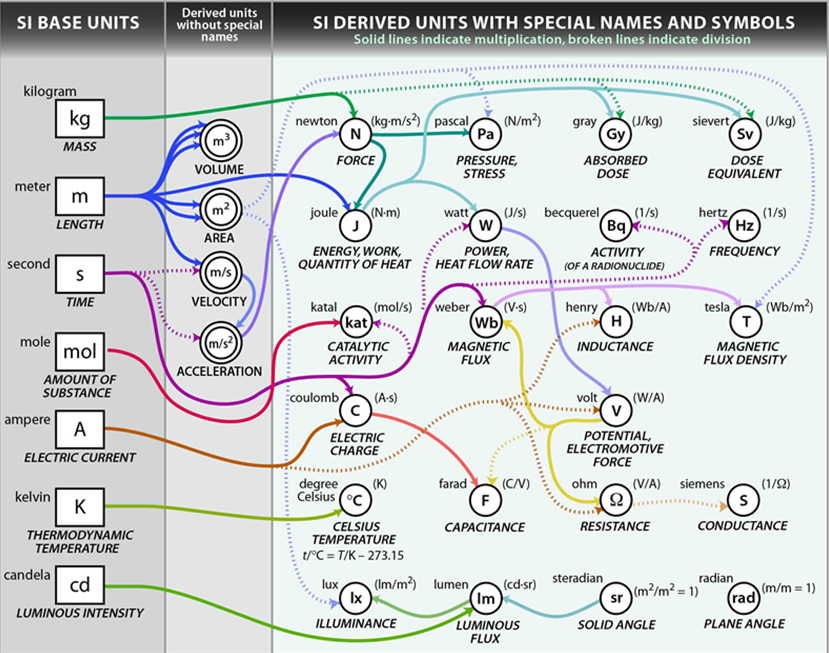6 Things Everyone Should Know About NIST Traceable Force Measurements

Many organizations with people in them still use outdated terminology.
Such terminology uses the term NIST traceable force measurements or requests that calibration be NIST traceable.
In measurement standards, the term "traceability" often invokes thoughts of the National Institute of Standards and Technology (NIST), a renowned institution known for establishing and maintaining standards.
However, a more profound understanding of traceability leads us to the heart of measurement science—the International System of Units (SI).

In this article, we explore why traceability to the SI is a crucial consideration, going beyond the traditional reliance on NIST, and that requesting NIST traceable force measurements is not technically correct.
- Global Standardization: The SI is an internationally recognized system that provides a standardized framework for measurements across the globe. It offers a universal language for scientists, engineers, and professionals, fostering consistency in measurement practices. While NIST is a reputable institution, emphasizing traceability to the SI ensures alignment with global standards, minimizing discrepancies arising from regional variations.
- Fundamental Units of Measurement: The SI is based on seven fundamental units, such as the meter, kilogram, second, and ampere, forming the building blocks for all other units. These fundamental units are defined in terms of natural constants, offering a stable foundation for measurements. By prioritizing traceability to the SI, we anchor our measurements to these constants, ensuring a more robust and unambiguous basis for accuracy.
- Evolution of Measurement Science: Measurement science is dynamic and constantly evolving with technological advancements and understanding. The SI undergoes periodic updates to refine and redefine its units based on the latest scientific knowledge. Relying on traceability to the SI ensures that our measurements stay abreast of these changes, promoting accuracy in the face of evolving standards.
- Consistency in Cross-Disciplinary Applications: Different industries and disciplines often require cross-disciplinary collaboration. Traceability to the SI fosters consistency in measurements, facilitating seamless communication and cooperation among professionals from diverse fields. It serves as a common reference point, allowing for accurate comparisons and meaningful data exchange across various domains.
- Alignment with International Regulations: Many countries and industries adopt regulations and standards that align with the SI. Ensuring traceability to the SI promotes compliance with these regulations and facilitates international trade by providing a standardized approach to measurements. This alignment reduces barriers to entry and promotes a level playing field for businesses globally.
- Holistic Understanding of Measurement Uncertainty: The SI provides a comprehensive framework for understanding measurement uncertainty. By tracing measurements back to the SI, practitioners gain insights into the fundamental sources of uncertainty and can make informed decisions about the reliability of their results. This holistic approach goes beyond the surface-level assurance traceability provided to specific institutions like NIST.
Thus, requesting NIST traceable force measurements on a contract should be replaced with better terminology. Measurements must be traceable to the SI through an NMI, preferably through NIST, which is fundamentally correct.
For additional information on Metrological Traceability to the SI, please read our article Metrological Traceability for Force Measurements.
NIST traceable force measurements Conclusion:
While NIST has been pivotal in shaping measurement standards, traceability to the SI offers a broader, more globally inclusive approach.
Prioritizing traceability to the SI units ensures that our measurements are rooted in fundamental constants, aligned with international standards, and adaptable to the evolving landscape of measurement science.
As we navigate an increasingly interconnected world, embracing the SI as the primary reference for traceability reaffirms our commitment to precision and reliability in measurement practices.
Click below for the actual NIST policy on Metrological Traceability and learn more about why requesting NIST traceable force measurements is incorrect.
Metrological Traceability: Frequently Asked Questions and NIST Policy | NIST
For information on what Morehouse can offer you for traceable to SI force calibrations, where most of our force standards were calibrated directly by NIST, including our deadweight machines known to be within 0.002 % of applied force, click here.
-Henry Zumbrun, Morehouse Instrument Company
Companies worldwide rely on Morehouse for accuracy and speed. The company turns around equipment in 7-10 business days so customers can return to work quickly and save money.
About Morehouse Instrument Company
Morehouse Instrument Company, a trusted and accredited provider of force and torque measurement services for over 100 years, offers measurement uncertainties 10-50 times lower than the competition.
Morehouse helps commercial labs, government labs, and other organizations lower their measurement risk by lowering equipment uncertainties for torque and force measurement. Contact Morehouse at info@mhforce.com.
More Information about Morehouse
We believe in changing how people think about force and torque calibration in everything we do.
This includes setting expectations on load cell reliability and challenging the "just calibrate it" mentality by educating our customers on what matters and what causes significant errors.
We focus on reducing these errors and making our products simple and user-friendly.
This means your instruments will pass calibration more often and produce more precise measurements, giving you the confidence to focus on your business.
Companies around the globe rely on Morehouse for accuracy and speed.
Our measurement uncertainties are 10-50 times lower than the competition.
We turn around your equipment in 7-10 business days so you can return to work quickly, saving you money.
When you choose Morehouse, you're not just paying for a calibration service or a load cell.
You're investing in peace of mind, knowing your equipment is calibrated accurately and on time.
Contact Morehouse at info@mhforce.com to learn more about our calibration services and load cell products.
Email us if you ever want to chat or have questions about a blog.
We love talking about this stuff.
Our YouTube channel has videos on various force and torque calibration topics here.


